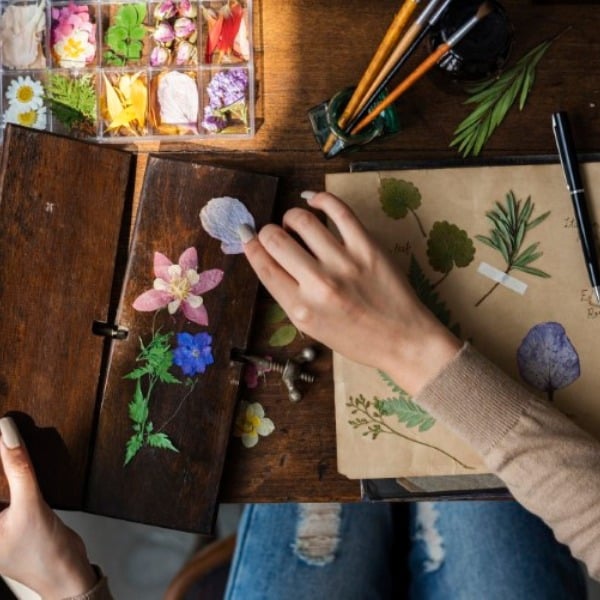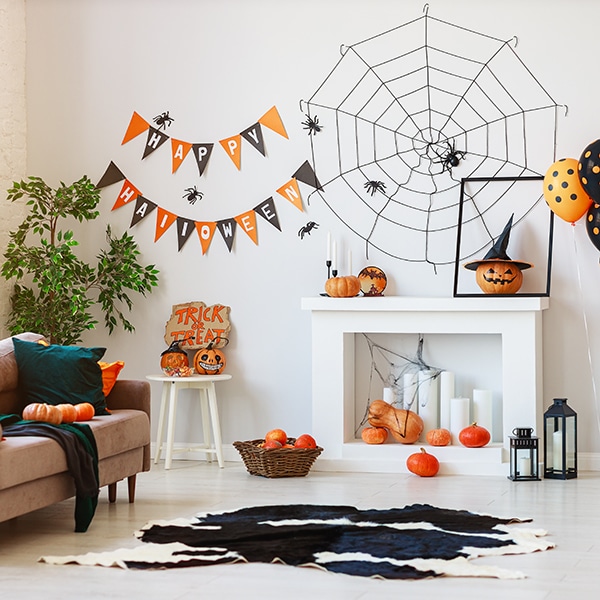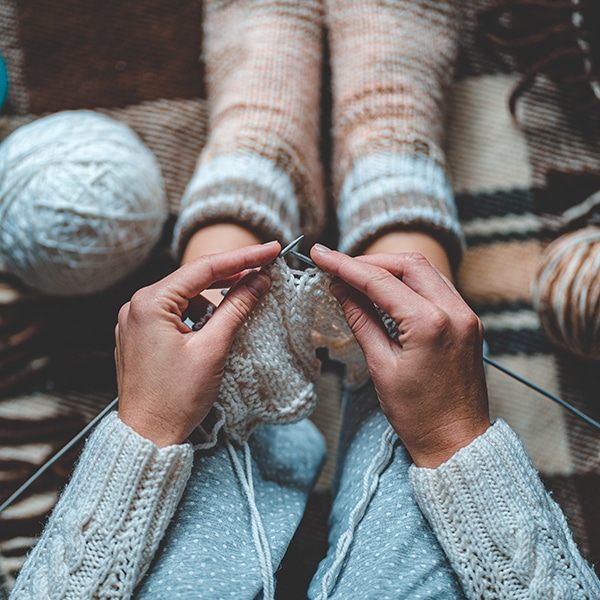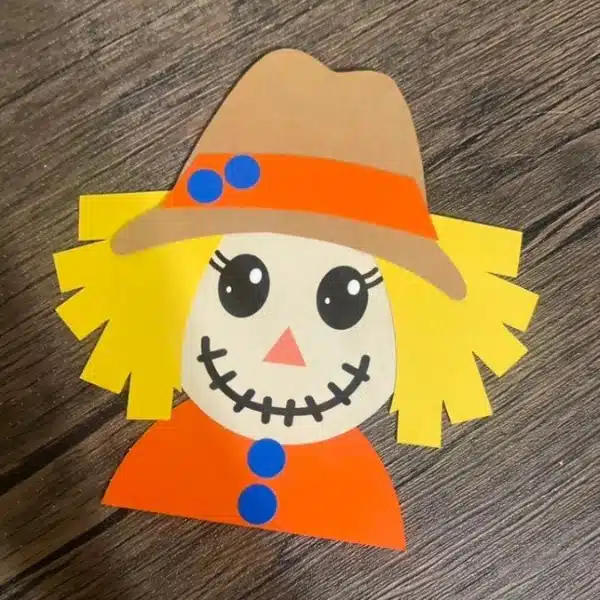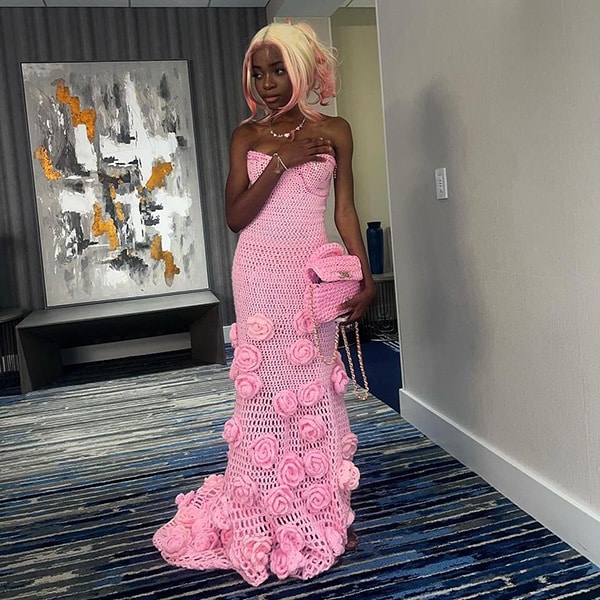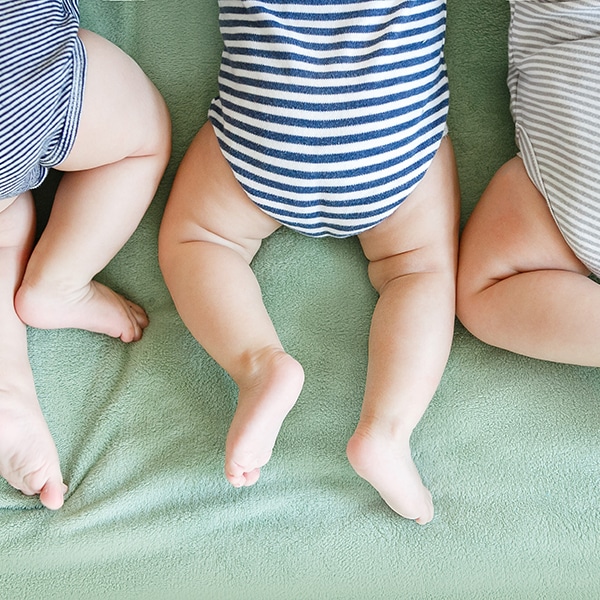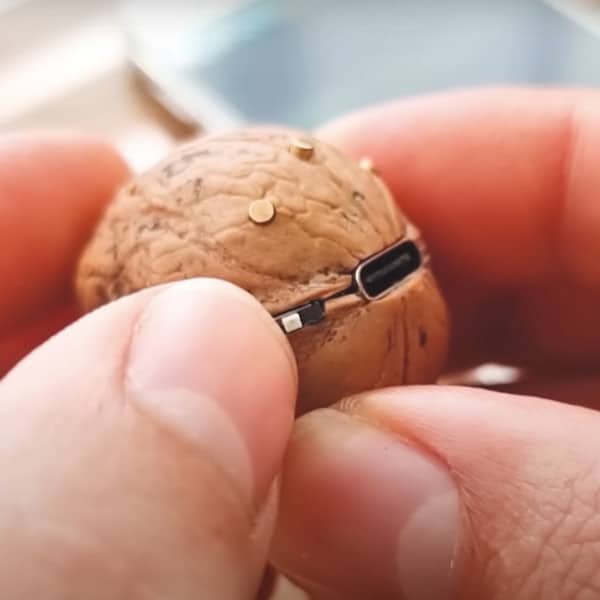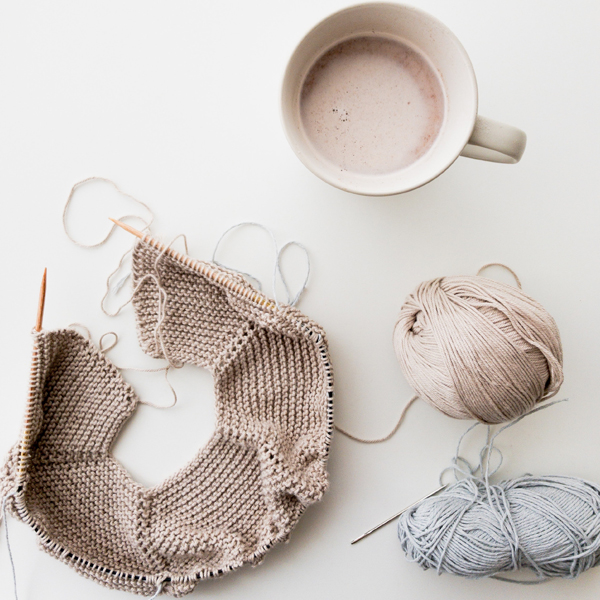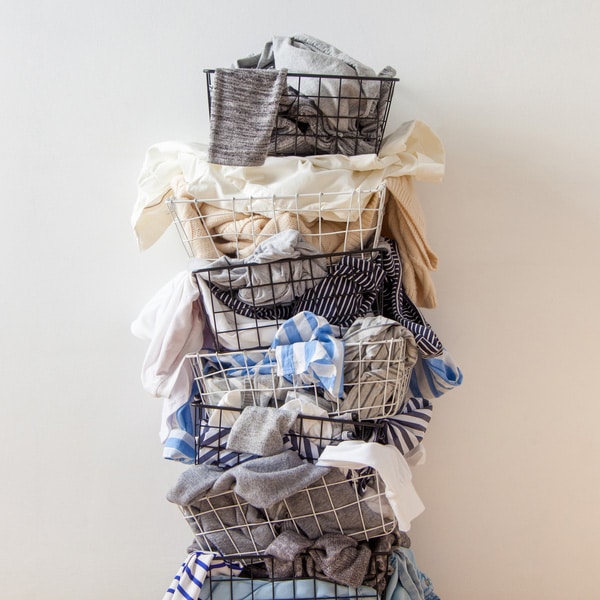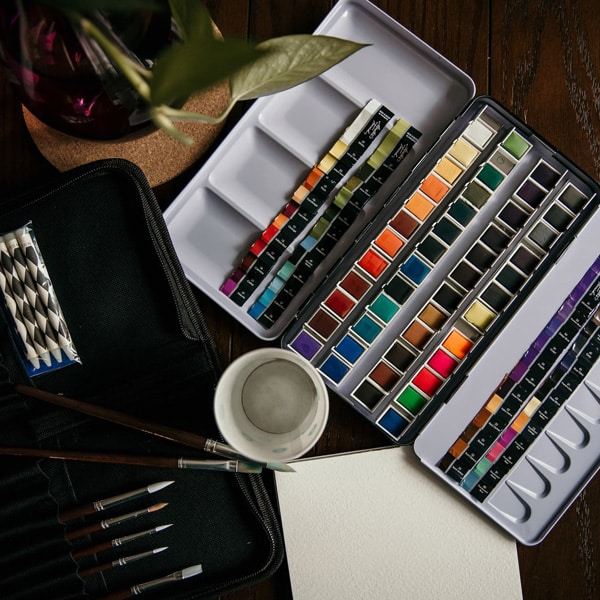
Photo: Stock Photos from melnikof/Shutterstock
This post may contain affiliate links. If you make a purchase, My Modern Met may earn an affiliate commission. Please read our disclosure for more info.
Most of us have had a quilt at one time or another, whether as a child or an adult. More than something to place over your bed, quilts tell a story. Handmade and passed down through generations, the idea of a quilt conjures up comforting memories.
The art of quilting has a long, storied history and is particularly tied to American folk art. And just as many handicrafts like hand embroidery, knitting, and needlepoint are making a comeback, quilting has seen a resurgence. A wonderful way to express creativity, making a quilt doesn’t have to be difficult. There are so many techniques one can use, that it’s easy to get started and build up your skills.
Historically, quilts were used as bedcovers, which continues today, but you’ll also see them displayed as artistic wall hangings or even as small table runners and placemats. Quilts can be hand sewn on a frame or, more commonly these days, sewed together on a machine. At the end of the day, it really comes down to bringing together three layers—the patterned top, the center batting, and the plain backing—using the quilting technique. Really, once you have the basic technique down there’s nothing you can’t create. Quilting itself is the act of sewing together these three layers and the stitches used to do so.
Quilting Terminology
To get you started, here are some of the common terms you will come across when learning to quilt.
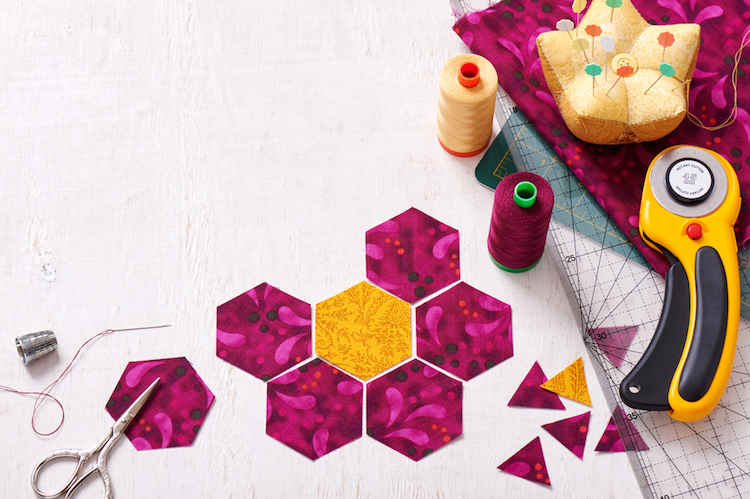
Photo: MaxCab via Shutterstock
Appliqué – This technique entails sewing pieces of fabric, usually cut into designs, onto a background fabric.
Backing – The backing is the textile that is the bottom layer of the quilt. Occasionally it’s embellished, but more often than not it will be a plain, single piece of fabric.
Basting – This is the act of securing the three layers in place prior to quilting together the quilt. People hold these layers in place using basting pins, a running stitch, or starch spray.
Binding – This finishing touch requires a thin strip of fabric sewn around the entire exterior circumference of the quilt.
Chain piecing – Used to speed up construction and save thread, chain piecing is when individual pieces of fabric are run through the machine in an assembly line without stopping to break the thread between each patch. Once the “chain” is finished, the threads between each patch are clipped.
Design wall – A wall or screen covered with batting where fabric blocks are laid out into the quilt pattern before sewing. Once the look is finalized, the fabric can be fixed to the batting using pins.
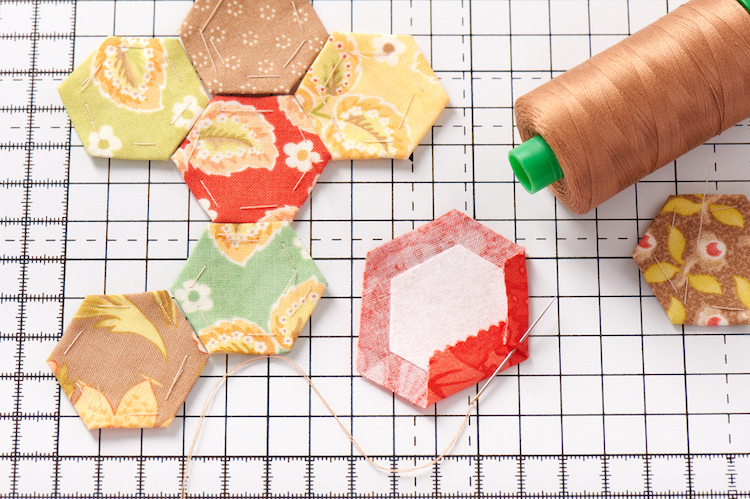
Photo: MaxCab via Shutterstock
Free-motion quilting – Free-motion quilting (FMQ) simply uses a domestic sewing machine to sew together the quilt sandwich. In this case, quilters leave the feed dogs down and use a hopping foot, which allows movement in all directions to create stitch patterns.
Jelly roll – Jelly rolls are prepackaged fabric strips, each measuring 2.5 inches by 44 inches. Their pre-cut nature makes them a timesaving option for quilting. They’re usually sold by Moda Fabrics from coordinating color collections.
Paper piecing – This patchwork quilting method is an English technique where pieces of fabric are sewn to a paper template to ensure accuracy. Once the block is completed, the paper is torn away.
Patchwork – Also known as piecework, the popular quilting style is when strips of fabric are sewn together to create different geometric shapes. As opposed to appliqué, the shapes are “pieced” together along the seams rather than sewn over a background fabric. Curious? Check out how to make your own patchwork quilt.
WOF – This abbreviation, commonly seen in quilt patterns, stands for Width of Fabric. Most fabric is sold at 44 inches in width, though sometimes 60 inches is used.
Essential Quilting Supplies
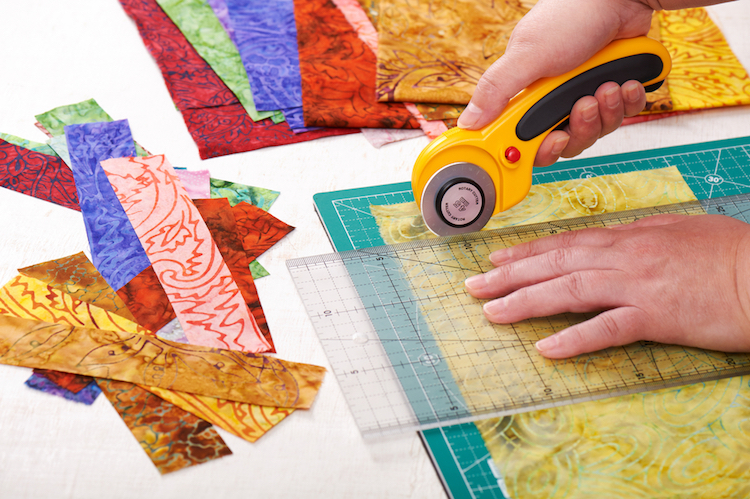
Photo: MaxCab via Shutterstock
Scissors – As with all textile arts, good scissors are a must. You’ll want to have several pairs, including large fabric shears and smaller scissors that are good for snipping thread.
Rotary cutter – An essential tool for quilters, a rotary cutter will help you create accurate shapes. The tool looks similar to a pizza cutter, and will easily cut through fabric. Take some time to practice on scraps to get your technique down in order to create uniform shapes for your projects. A 45 mm blade is typically a good starting point.
Self-healing cutting mat – You’ll need a surface to cut your fabric on, and you don’t want the sharp rotary cutter to ruin your table (especially if it’s made of wood). This mat will allow you to keep a smooth surface even after continuous cutting.
Seam ripper – If you make a mistake, this tool will help you pull out seams in a pinch and start from scratch.
Acrylic Quilting Ruler – You’ll need these to accurately cut your fabric. They have special markings to help make accurate cuts, have a grip so the fabric doesn’t slip, and are transparent so you can see as you are cutting. They come in different shapes and sizes, but a good place to start is with a 6” by 24” ruler.
Sewing machine – You don’t have to spend a lot of money, but do need to invest in a sewing machine with a reliable motor. If you’re thinking about free-motion quilting, you’ll also want a machine that will let you drop the feed dog.
Needles – A must whether you are hand sewing or using a sewing machine.
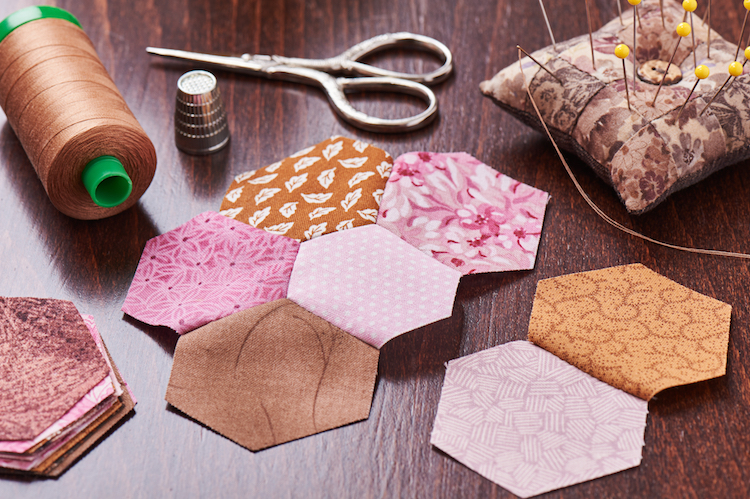
Photo: MaxCab via Shutterstock
Iron & Pressing Pad – A must in order to keep your pieces flat and sturdy once sewn together. Traveling irons are great because they heat up quickly, while a pressing pad traps heat while not stretching out patches or embroidered pieces during ironing.
Basting Pins – You’ll need quite a lot of these for most projects. Quilters use curved safety pins made especially for the job.
Clips – These are a nice alternative to straight pins to fix your quilt sandwich and to bind while basting your quilt.
Batting – This layer of insulation is the “filling” of your quilt sandwich. Be sure to consider how warm you’d like your quilt to be when choosing a material. Wool will be the warmest while cotton will be lightweight. Batting comes in a variety of thicknesses, called loft. Wool has the highest loft, for a fluffy feel. Polyester batting is an affordable choice and holds its shape well. It’s often selected for cribs and bedding.
Thread – High-quality thread is a must for a durable quilt. 50-weight 100% cotton thread is a good choice, as it’s sturdy but not too bulky. You’ll find many different brands in a wide array of colors.
Fabric – Of course, we can’t forget the fabric! Again, this is an area to invest in and purchase top quality. 100% cotton is a good choice and by buying high-quality fabric, not only will your quilt last longer, but it will be easier to sew and there will be less chance of color bleeding.
Quilting Kits
As you’re starting out, you may want to consider a quilting kit. This will save a lot of time, as they not only arrive with the quilt pattern but all the fabrics you’ll need to create the perfect quilt.
Eventually, you can graduate to using patterns, which give you a design and instructions, but more creative freedom. You’ll find free quilt patterns online or you can download a modern quilt pattern by an independent maker. Or try books like 100 Modern Quilt Blocks and Quilt as You Go Made Vintage. In the meantime, let’s look at our favorite contemporary quilting kits.
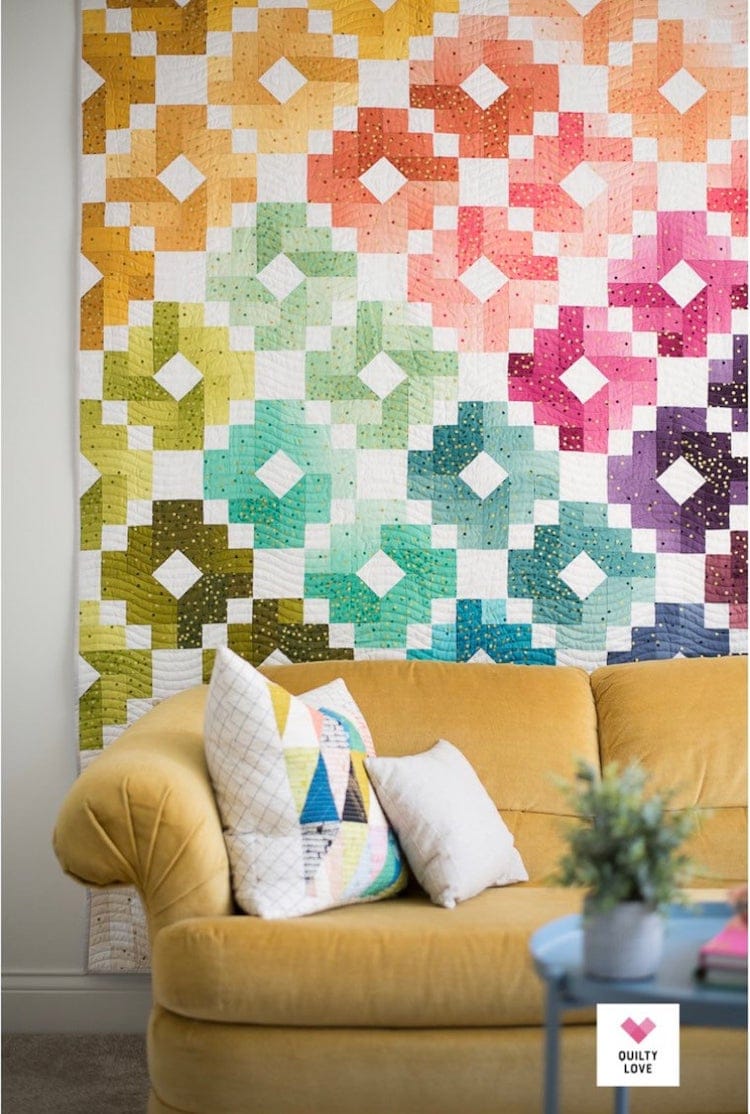
Handmade is Heartmade | $99+
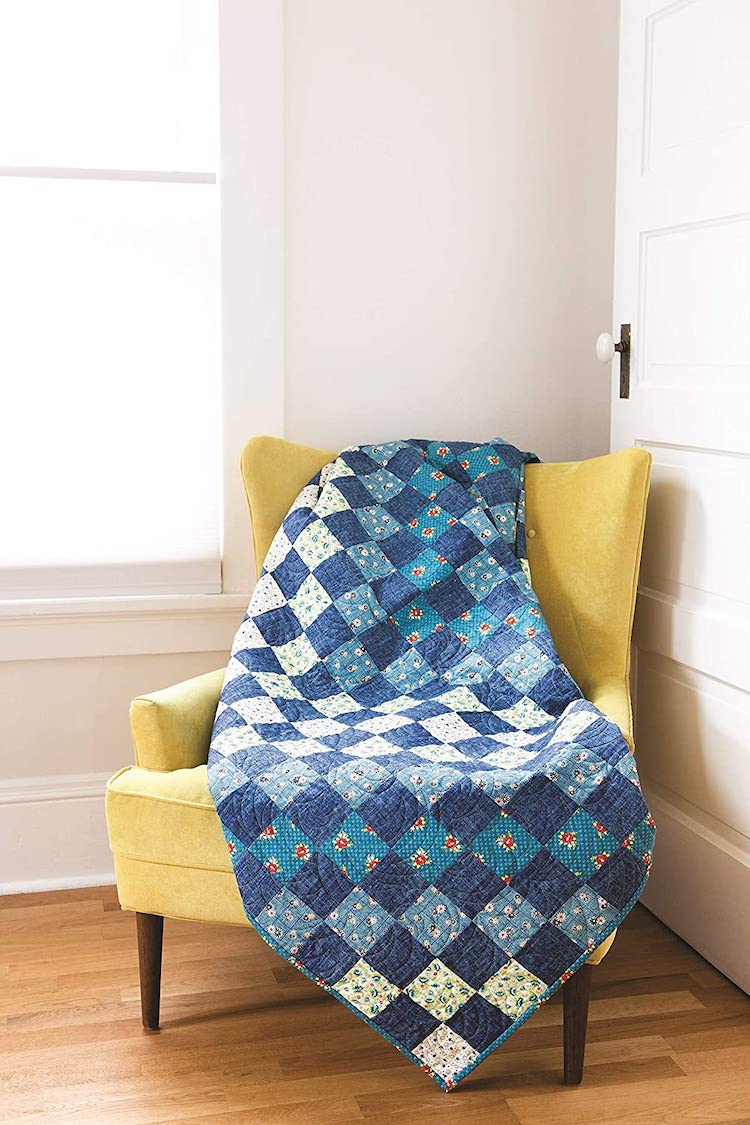
Connecting Threads Store | $64.99
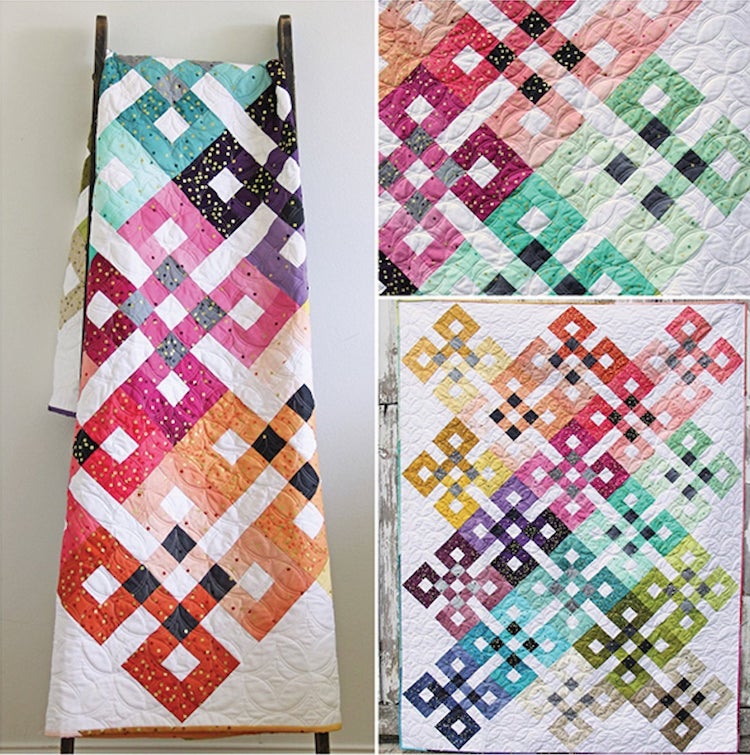
Handmade is Heartmade | $85
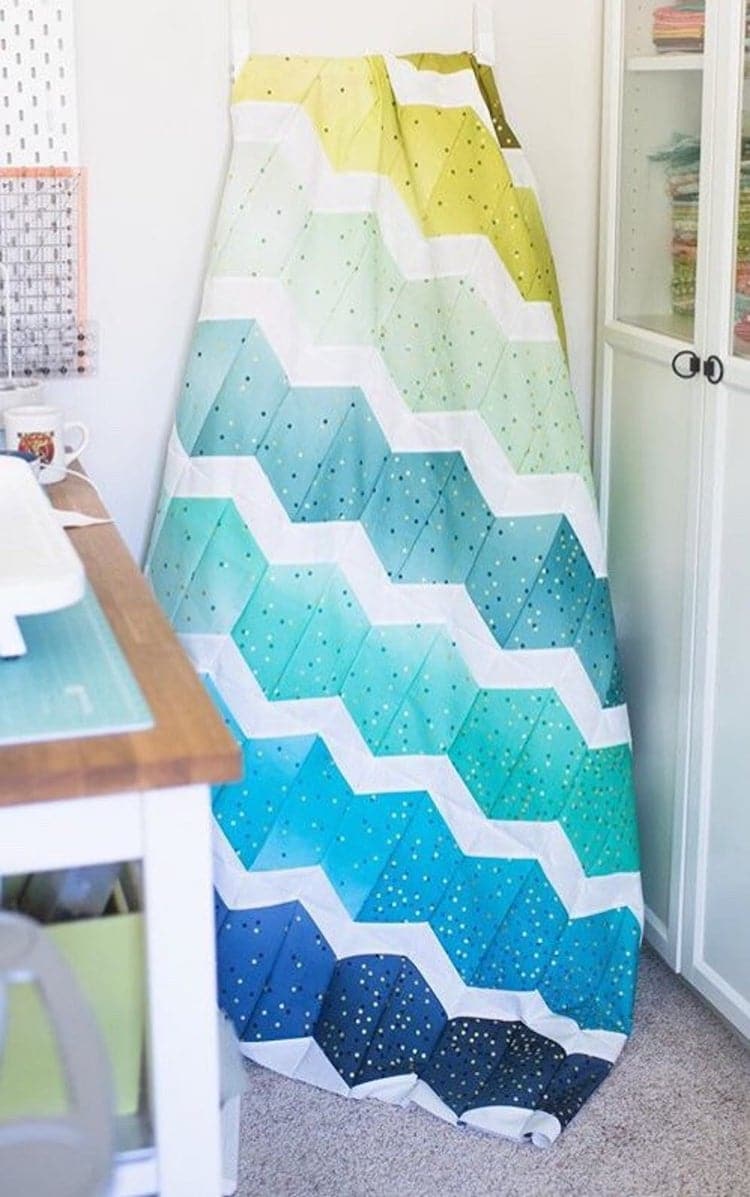
Handmade is Heartmade | $62
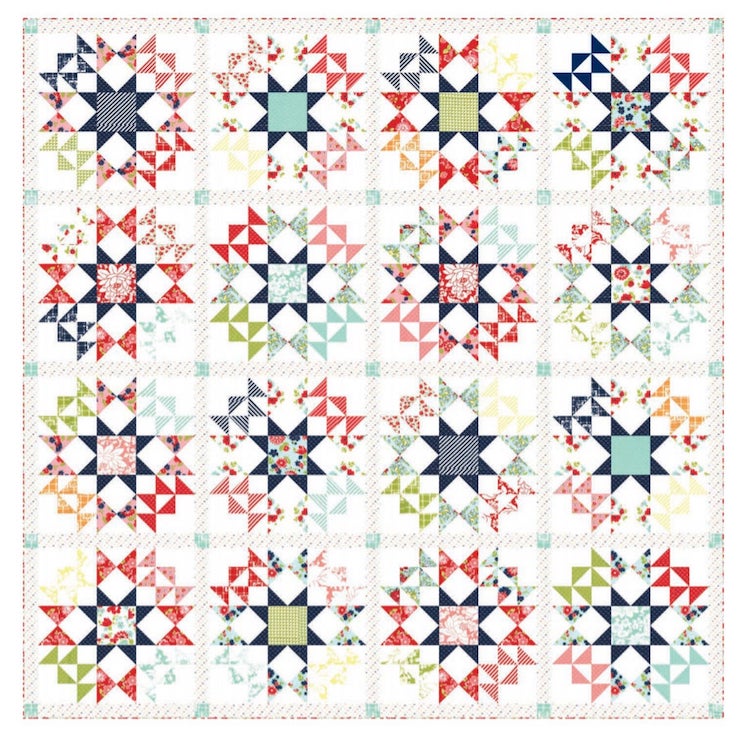
Stitches N Giggles AU | $99.75
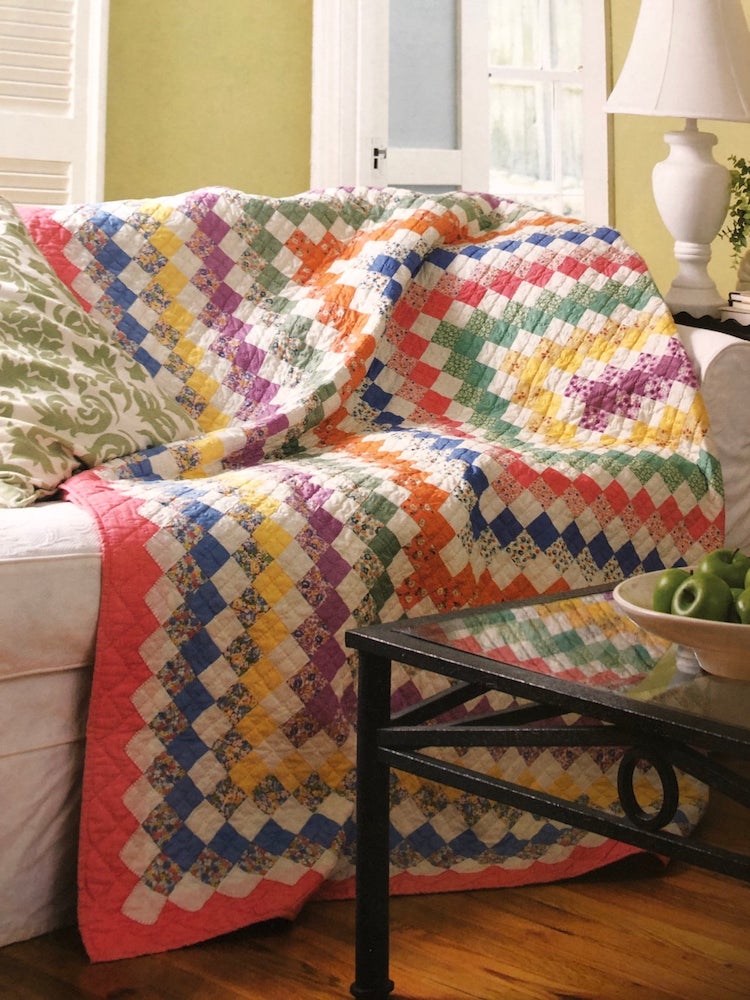
Piper Park | $325
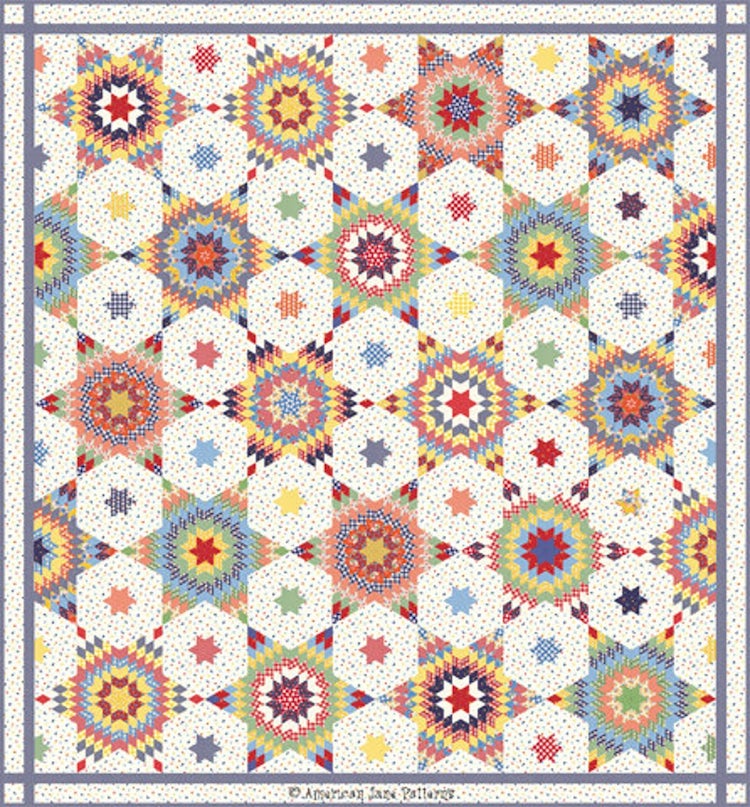
Stitches N Giggles AU | $182
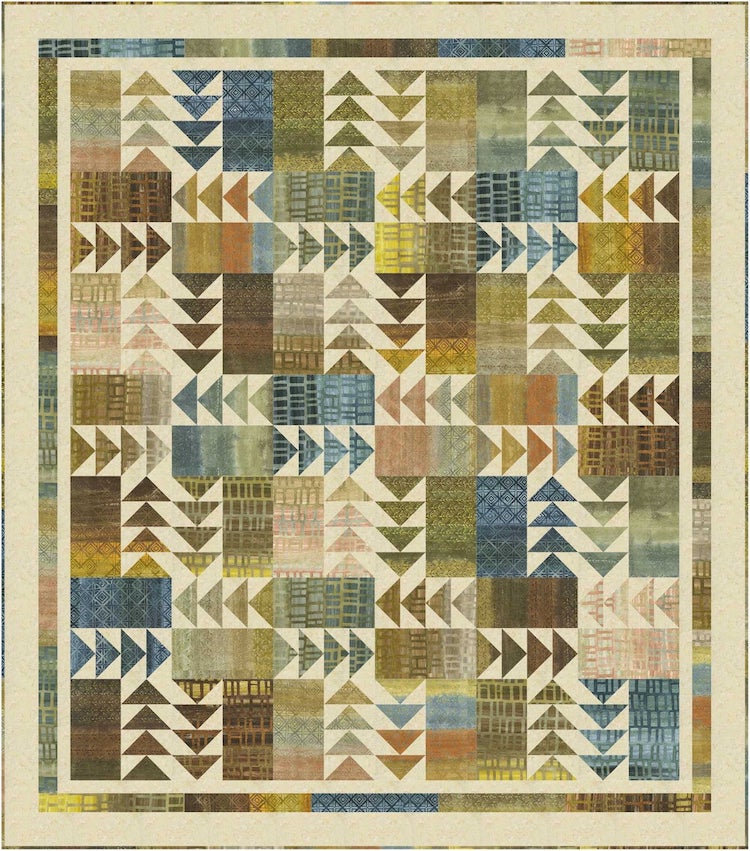
Fabric Addict Shop | $153
Free Quilting Tutorials
Now that you have your supplies, check out these great YouTube channels for free quilting tutorials. There is such a wide variety of quilting techniques, that you'll quickly find information on how to make a quilt in the style you're after.
Create & Craft TV
Midnight Quilt Show
Fat Quarter Shop
Missouri Star Quilting Company
SewVeryEasy
This article has been edited and updated.
Related Articles:
25+ Knitting Patterns That You Can Start Working on Right Away
What Is Needlepoint? Learn the Basics to Begin the Craft
Learn How People Are Creating Collage-Like Fabric Art Using Appliqué
What is Embroidery? Learn the Origins of This Ancient Craft and How It’s Used Today
How to Make Your Own Free Embroidery Pattern (and Download Others for Free)











































































